-
Posts
2,744 -
Joined
-
Last visited
Content Type
Profiles
Forums
Gallery
Events
Posts posted by Gregory
-
-
Are you referring to:
https://modelshipworld.com/forum/77-medway-long-boat-1742-public-group-project/
Your question appears to refer to more than one model..
-
2mm Sounds a bit thick for the amount of bend in that area.
You might try thinning it down to at most 1.5 mm. Try soaking the strip before bending it in place, then let it dry before gluing..
Also note that it may tend to split more depending on the direction of the bend. Start your bend, and if it looks like it wants to split, try bending in the other direction.
-
Has anyone referred you to Petersson's Rigging Period Fore and Aft Craft?
One has to keep in mind that the author simply documented what he observed on a contemporary model.
While the information appears to be accurate in many respects, some problems have been pointed out, here and there.
Here are his diagrams of the the throat and peak halyard rigging for " .. a typical American schooner."
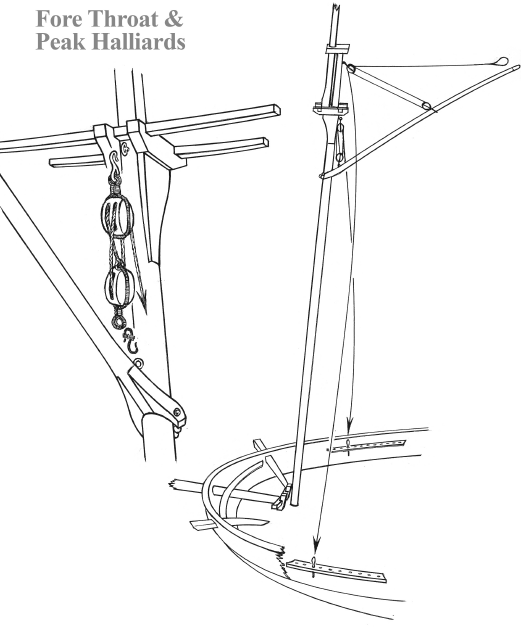
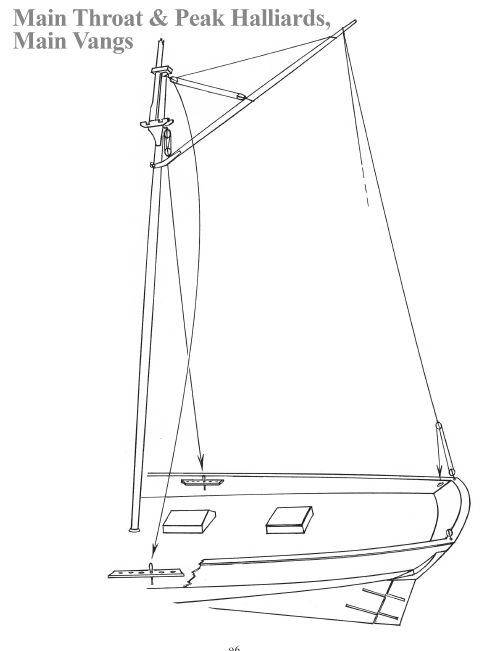
Along with all the other information you have been provided, this should be of some help..
-
-
FWIW, whenever I get an upload error, I change the format of the picture, say from .JPG to .PNG and it usually works..
-
10 hours ago, FrankWouts said:
...but also be considered should be that sometimes a huge amount of muscle force was used to lower or raise the guns to aim...so little more robust would be my taste as well.
I don't think the quoin would have been used to raise and lower the gun, rather it was moved into position after the fact..
I would go with what looks good..

- JpR62, Rustyj and FrankWouts
-
 2
2
-
 1
1
-
On 12/29/2021 at 4:05 PM, Tom in NC said:
Most criticisms seem to center around vague and poorly translated instructions.
Mamoli, like most European ( besides UK ) did and still does leave a lot to be desired in the 'instruction' department.
The new kits are no improvement in that regard. The Mamoli kits never included an instruction book. They had several large, very nicely drawn plan sheets , with multilanguage 'instructions' printed on the sheets.
Little more than a drawing of what the pieces of wood should look like when you got through with it.
The builder should have other references and a little experience with basic POB wood kit building, before starting a Mamoli kit.
MSW will be a lot of help in that regard.
I have always liked Mamoli kits, in that I lean toward an art piece, with lots of bare wood, rather than a historic ship model.
However, I have seen some very nice builds of the Mamoli Victory, Royal Louis and Friesland among others.
Contrary to the advice I give you, my first wood kit was the Mamoli Rattlesnake over 25 years ago.
No internet, but a lot of help from Seaways Ships in Scale Magazine, mostly with regard to what books to buy..
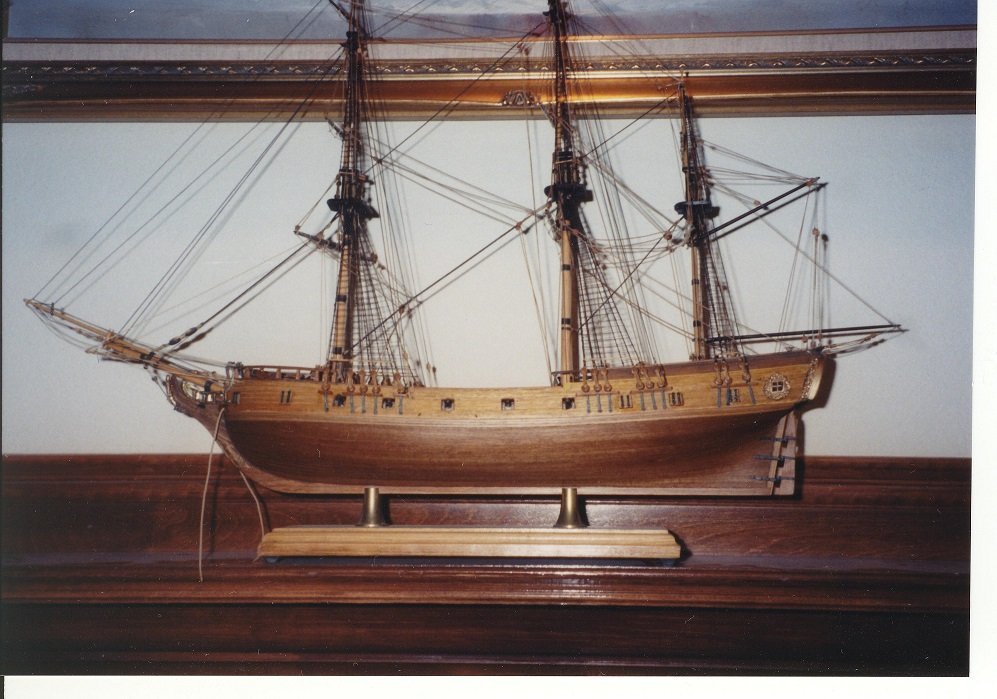
Not quite finished in this picture, but not bad for a first kit. I framed the main plan, and it hangs in my workshop..
I also have a Mamoli Gretel and Mary in the Gallery.
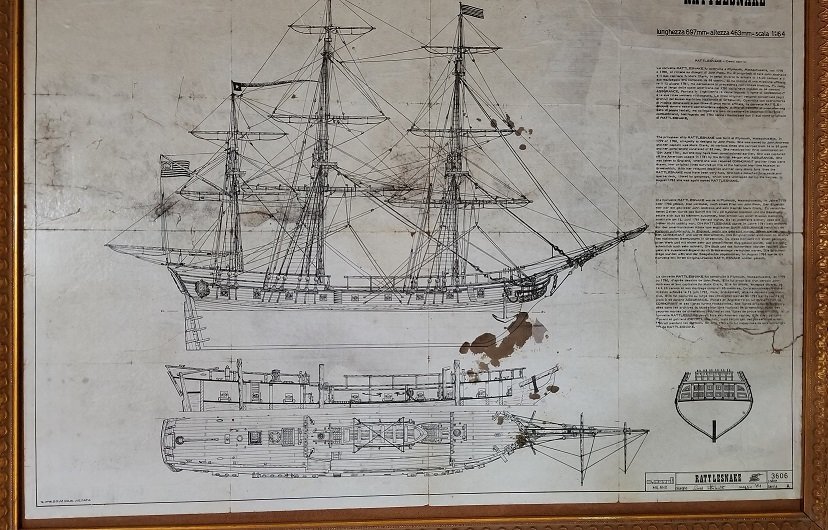
Now a little more about the new Dusek release of the Mamoli kits.
I started a build log of the new Dusek Gretel:
I noted some of the enhancements Dusek has made. Most notably, addition of some PE fittings, and laser cut frame and bulkheads..
Dusek has added separate laser cut stem, keel and stern post, whereas Mamoli used to have you create those parts by applying veneer to the one piece backbone. I hope to find time to work more on that little boat. It is a lot of fun.
If there is one thing I found I don't like about the new Dusek release, are the plans.
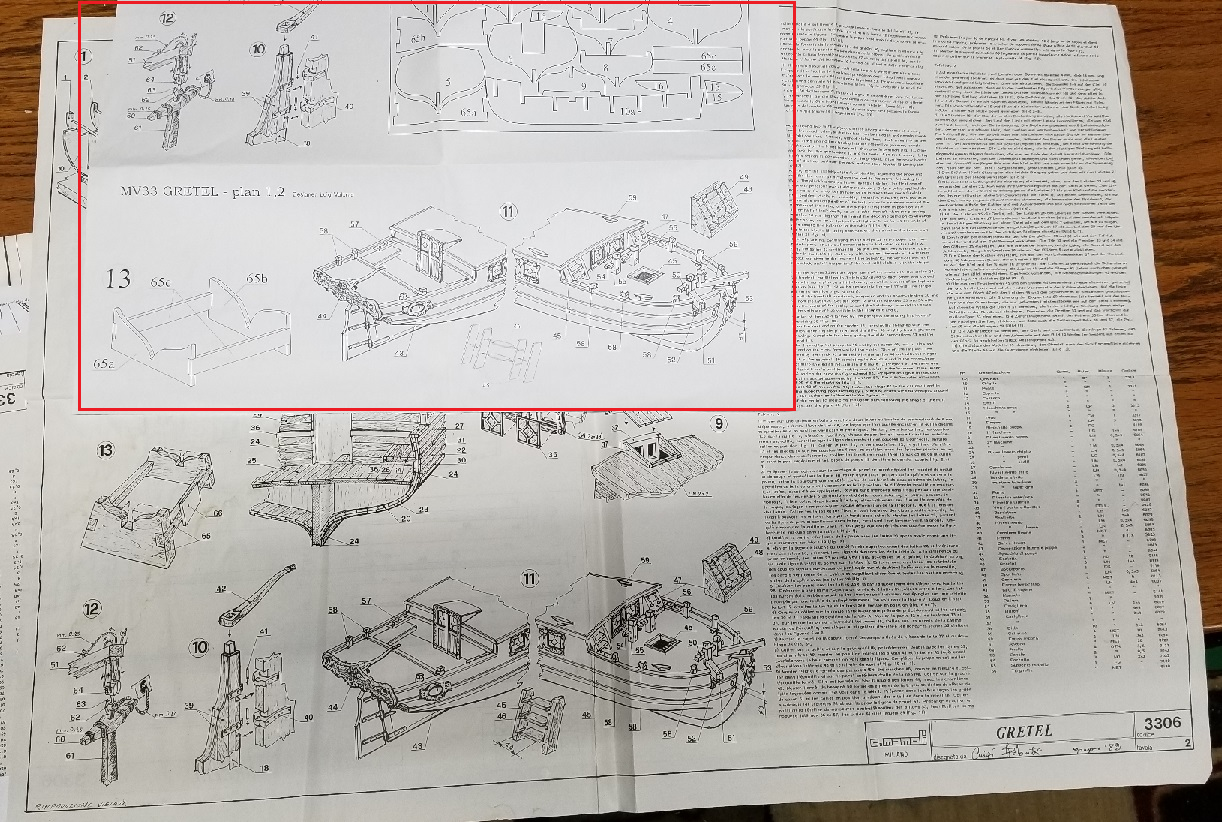
They have taken the large, heavy stock, plans and copied them to several smaller sheets (outlined in red ).. Just not as nice as the big sheets.
There is one large ' full size ' but it is not to scale, which was a useful feature on the old plans..
All in all, if you like the subject matter, and are prepared to figure a lot out on your own, I think Mamoli kits can be worth while..
-
-
-
-
How relevant is the thickness if you don't overlap?
The overlap is not apparent in the images of the Cutty Sark and Constitution presented earlier..
Plus, there are various thicknesses available. I saw one that was .025mm.
It doesn't appear to be listed in the specs, but if you ask, you will get a good answer from the seller/manufacturer..
-
Copper foil tape is available in 1/4 - 1.5 inch diameters.
Those who are so inclined, can adjust the size..
-
On 12/25/2021 at 11:03 AM, Tommy Vercetti said:
17th century frigates.
Historic Ship Model by Mondfeld has a lot of general information .. Can be a good place to start.
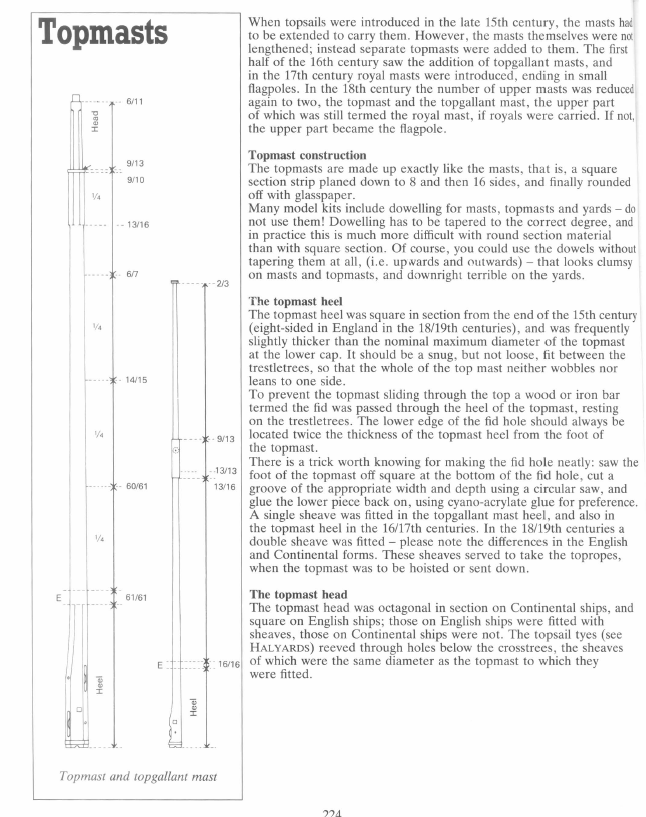
Here is an example .. Topmasts and topgallants were for the most part made from single timbers and not built up like lower masts..
- Tommy Vercetti and mtaylor
-
 2
2
-
-
-
-
-
Here is what Lees says about jib boom horses:
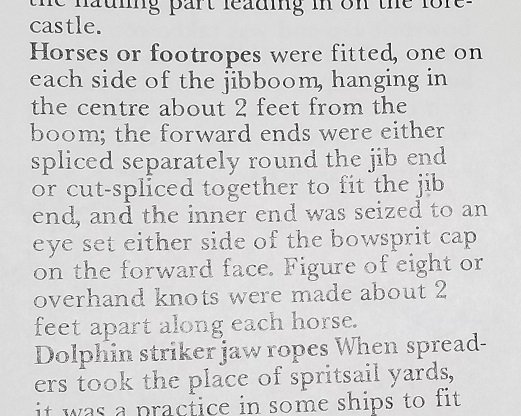
Sounds like what I had come to understand.. Note that there is no mention of stirrups for these foot ropes.
Now, what about this..
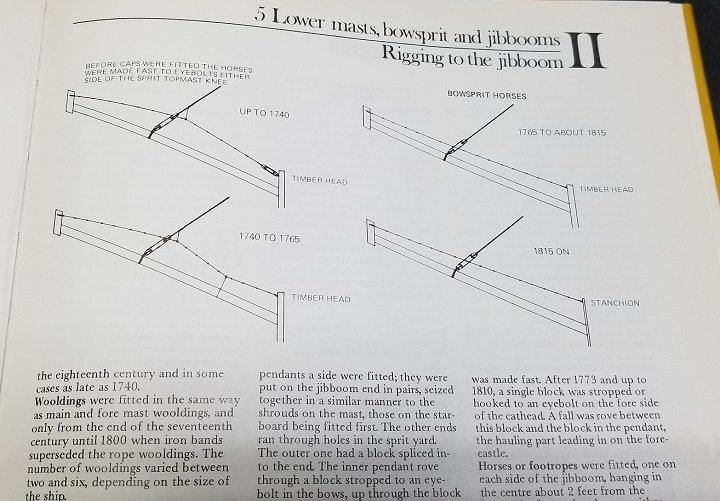
Here are the illustrations for the bowsprit foot ropes.
I'm having trouble understanding these.. Did they not stand on them, but just hold them while standing on the bowsprit.
How did they do any work while holding on?
-
P.S.
I had a few of these fly across the room before i refined the process. My spindle is a toothpick that I forced the truck onto until it was tight,
but not so tight that it could not turn if the torque got too high.
With hindsight, a little nut on the end of the toothpick would have kept the truck from going frisbee on me..
- FrankWouts and Rustyj
-
 2
2
-
Rusty, I know you are a skilled craftsman, and possibly considered this, but I had great results cleaning my trucks on a low speed rotary tool..
Too late for you, but might help someone else..
- DaveSchmidt, Rustyj, FrankWouts and 2 others
-
 5
5
-
-
20 minutes ago, JimmyK said:
My major problem with this kit is actually what am I building. Is it really the Flying Fish?
There were probably any number of ships/boats named " Flying Fish ..
It is highly unlikely that Core used the actual plans of a ship of that name..
Don't let that stop you from enjoying the experience..
- Keith Black, JimmyK and mtaylor
-
 3
3
-
30 minutes ago, popeye2sea said:
...tarring would just as effectively keep all the wet in and the cable would never dry out and eventually rot.
I would think Lees would have mentioned this. Maybe someone else can check before I can get to my library..
Lavery goes into great detail about anchors and cables, but doesn't mention tarring..
He does say a 74 would have had 7, 22inch cables of 120 fathoms. That would have been a lot of tar that would need to be replenished..
-
Here is a link to Chuck's recipes..
Like Chuck says, your end result can be slightly different depending on how your machine does things, but it should be close..

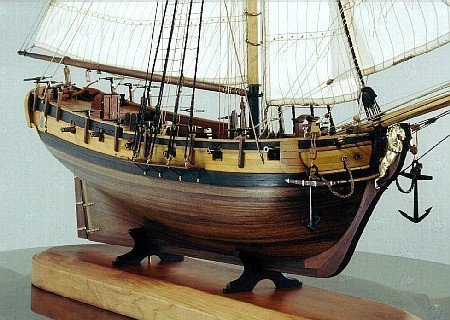

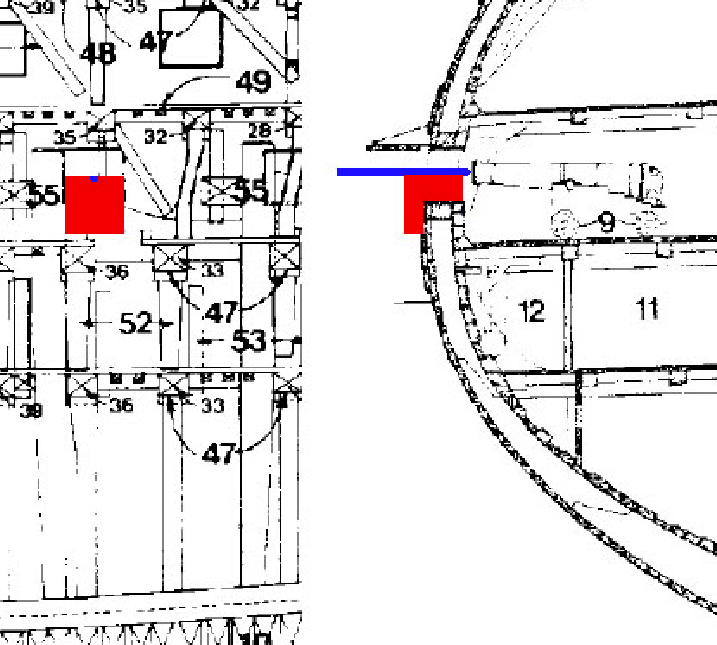
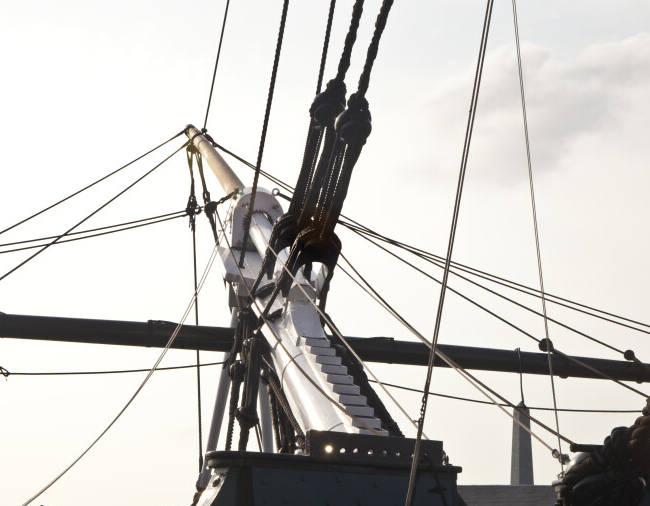
are these advanced models
in Discussion for a Ship's Deck Furniture, Guns, boats and other Fittings
Posted
Take a look here: